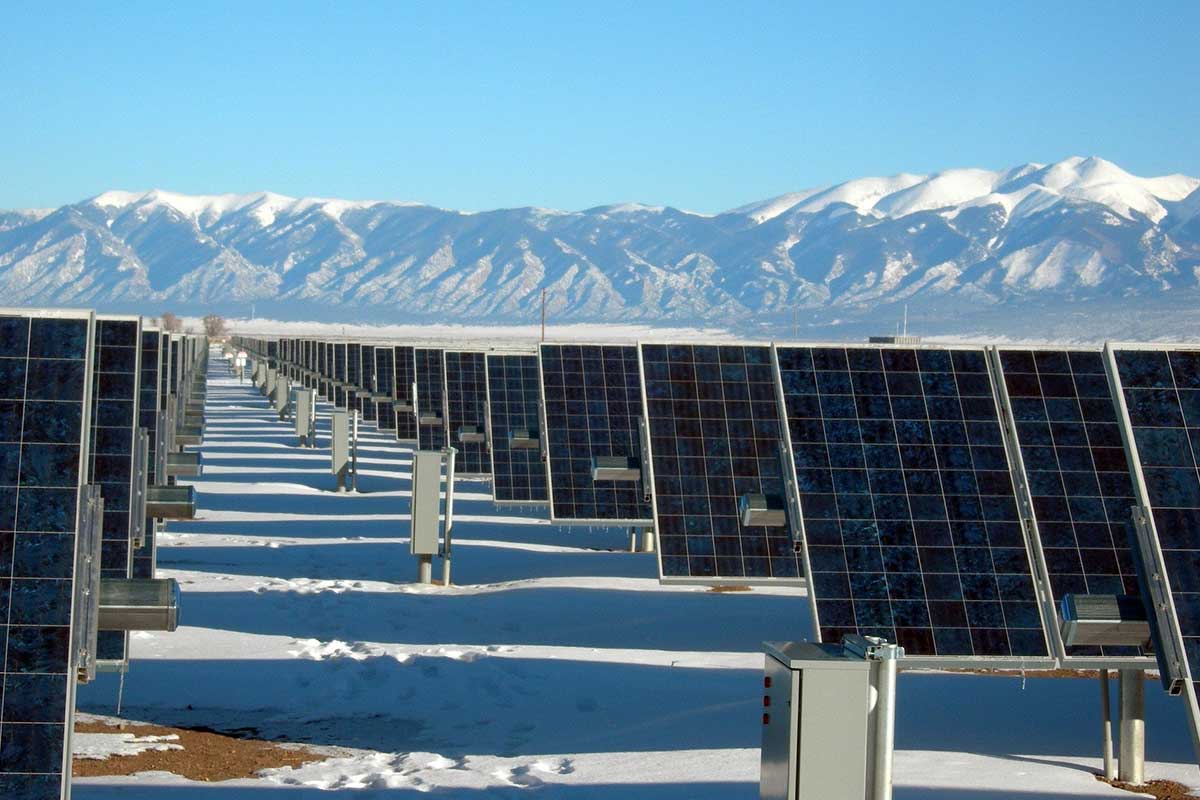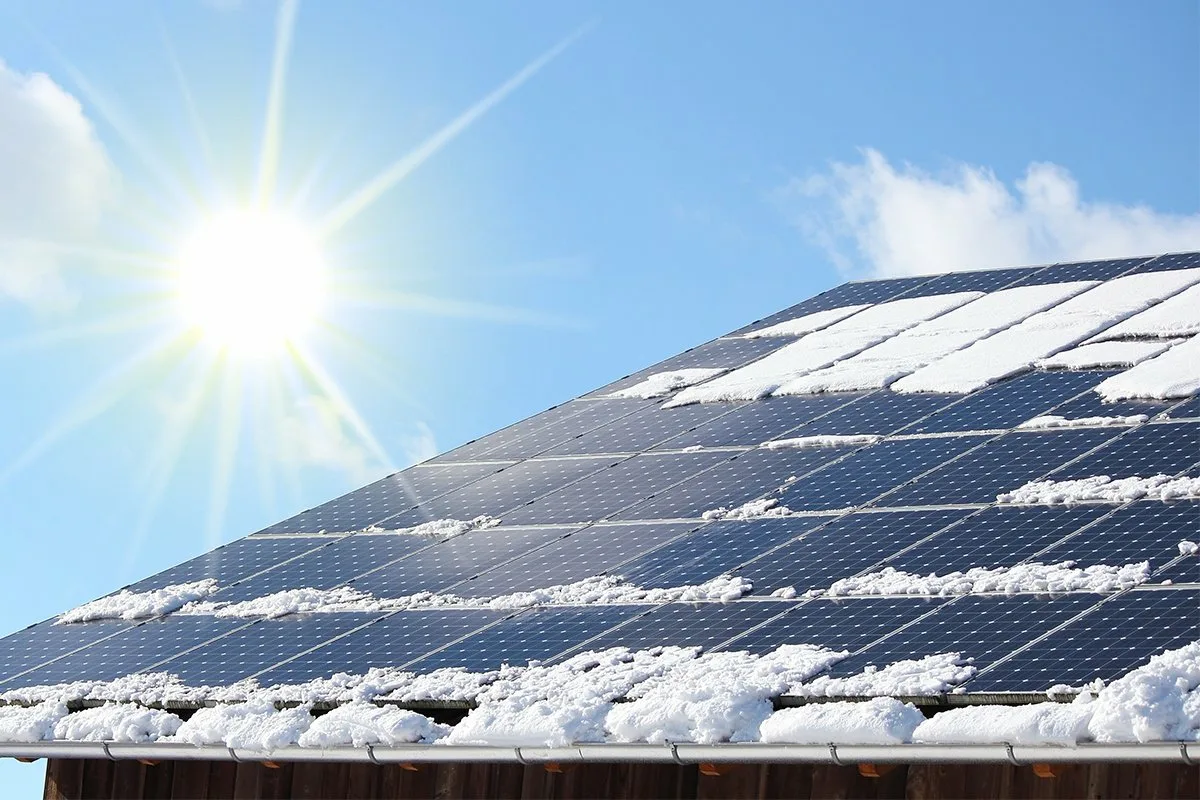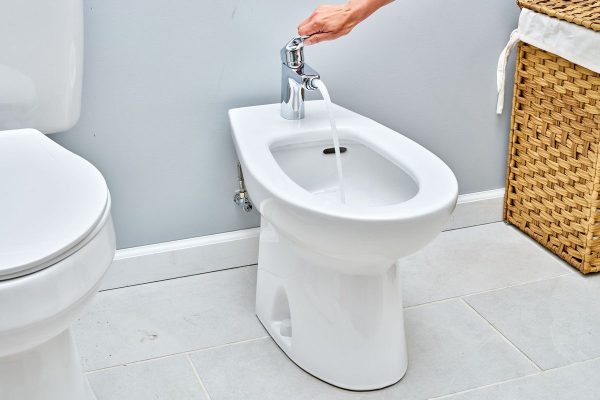In four days, three people installed more than 1,600 solar panel modules on the roof of a huge building. What makes them special is that they are vertical, which is essential in certain latitudes.
The world is immersed in the renewable energy revolution. China is the major power, in Europe we are seeing the rise of renewables, and even states such as Texas have jumped on the wind and photovoltaic bandwagon. However, there is one region where investing in solar panels seems counterintuitive: the Arctic. The reason? With the sun at the horizon for much of the year, traditional panels seem like a waste. The trick is to put them upright.
And in the city of Tromsø, the world’s largest installation of bifacial solar panels has just been completed.
Tromsøterminalen.
North of the Arctic Circle lies the city of Tromsø. It is located in the northernmost part of Norway, and a storage facility there has just broken the world record for the installation of vertical photovoltaic units, known as VPVs. For the past few days, the roof of Tromsøterminalen has been home to 1,600 VPV units, which together comprise 6,400 individual solar panels.
It covers an area of around 2,670 square metres and has an installed capacity of 320 kWp. As noted in Interesting Engineering, the CEO of Over Easy Solar (the Norwegian company responsible for the installation) says that it is the largest vertical solar system on a rooftop in the world. Too many “asterisks”, but the truth is that the orientation is impressive and responds to a need.
Vertical panels.
Northern Norway has some very capricious solar patterns. Focusing on Tromsø, from May to July there is a period known as the “Midnight Sun”. The Sun remains visible 24 hours a day with varying intensity, but the opposite phenomenon also occurs: the “Polar Night”. From late November to mid-January, the Sun barely rises above the horizon.
Depending on the area in Norway, there are between two and four months of continuous sunlight and another two to four months of polar night. Traditional panels would be unable to capture practically anything when the Sun is at too acute an angle, and this is where VPVs come into their own. While a traditional panel would achieve yields of 485 kWh under ideal conditions in this region, vertical panels can generate up to 55% more energy: around 750 kWh per year.

Sun… and snow.
In the winter months, this difference can be three or four times greater, but in addition to being more suitable for capturing the Sun when it is on the horizon, these vertical solar panels take advantage of the albedo effect caused by the snow that accumulates between the rows of panels and reflects sunlight. In other words, VPVs capture light from both the sun and what is reflected in the snow.
It is estimated that this can increase energy production by more than 30%, and obviously, the advantage of vertical orientation is that snow does not accumulate on top of the panels, making cleaning easier (snow and dust are enemies of photovoltaic panels) and ensuring more continuous production.
The Tromsø system is not the first of its kind and, in fact, is inspired by the success of the 1,200 PV panels installed a few years ago at the Ullevaal Stadium in Oslo. Furthermore, it is easy to install (according to the company, it was installed in four days by three people) and the CEO of Over Easy Solar is confident that Tromsøterminalen will serve as an example for other cities in extreme latitudes. However, they are not only useful in these conditions and some are already exploring this solution on roads or in agrovoltaic installations.
Scalability.
In fact, Over Easy is conducting tests to measure the production of vertical panels not in extreme areas, but in one of the paradises of photovoltaics: Spain. In the video below, we see how a cluster of these panels produces energy on a roof in Elche:
And the fact that it is on a roof is interesting because one problem that solar panels can have is their weight measured in kg/m². A traditional panel can weigh between 15 and 25 kg/m², taking into account the cells, structure, fittings and other components.
The one installed at Tromsøterminalen weighs 11 kg/m², which makes it easier to assemble and fill rooftops with panels.





